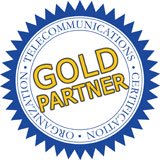Course 2232 Mobile Communications
1 Mobile Network Components and Operation
1.1 Mobile Network and Mobility
1.2 Handset, SIM Card and IMSI
1.3 Airlink, Base Station, Towers and Cells
1.4 Mobile Telephone Switching Office
1.5 Backhaul and Network Connections
1.6 Incoming Call and Paging
1.7 Mobility and Handoffs
2 Cellular Principles
2.1 Coverage, Capacity and Mobility Requirements
2.2 First Generation
2.3 Cellular Design to Meet the Coverage Objective
2.4 Frequency Re-use
2.5 Handoffs
3 1G: Analog Frequency-Division Multiple Access
3.1 AMPS, NMT and TACS
3.2 Frequency-Division Multiplexing
3.3 Frequency Re-Use
3.4 Analog FM
3.5 Difficulties
3.5.1 Eavesdropping
3.5.2 Modem Disconnect During Handoff
3.5.3 Low Capacity
4 Second Generation: Digital
4.1 Spectrum
4.2 Incompatible Spectrum-Sharing Technologies
4.2.1 CDMA: IS-95
4.2.2 TDMA: IS-136
4.2.3 GSM
5 PSTN Calls Using the Native Phone App: "Voice Minutes"
5.1 Voice Communication End to End
5.2 Coding
6 Mobile Internet: "Data Plan"
6.1 "Data" is Internet Traffic
6.2 Using the Built-in Modem
6.3 Tethered Modem
6.4 Wi-Fi and Bluetooth Links
6.5 Smartphones
6.6 Data Plans
6.7 Converged Communications + Converged Device Achieved
7 Mobile Network Operators, MVNOs & Roaming
7.1 Mobile Network Operator
7.2 Mobile Virtual Network Operator
7.3 Roaming
8 TDMA (IS-136) Time-Division Multiple Access
8.1 TDMA
8.2 IS-136 and D-AMPS
8.3 Capacity Increase
8.4 Inefficiency
9 TDMA (GSM)
9.1 Spectrum-Sharing Method
9.2 Inefficiency
9.3 Data, GPRS and EDGE
9.4 Terminology: Misuse of the Term "GSM Phone"
10 CDMA Code-Division Multiple Access
10.1 Carriers
10.2 Codes
10.3 Forward Error Correction
10.4 Variable-Rate Coding
10.5 Packetized Voice and Data
10.6 Qualcomm, IS-95A and IS-95B
11 Spread Spectrum
11.1 Chips and Chipping Rate
11.2 Spreading
11.3 Direct Sequence vs. Frequency Hopping Spread Spectrum
11.4 Error Correction
11.5 Rake Filters and Multipath
12 CDMA Operation and Patents
12.1 Communication via Multiple Base Stations
12.2 Multipath
12.3 Soft Handoffs
12.4 Walsh Codes and Pseudonoise
12.5 Base Station Identification, Short Codes and Timing
12.6 Power Control
12.7 Qualcomm
13 3G: CDMA 1X, UMTS and HSPA
13.1 IMT-2000
13.2 1X
13.3 Data-Optimized Carriers
13.4 Capitulation
14 4G LTE: Mobile Broadband
14.1 Introduction
14.2 LTE for the UTRAN
14.3 Modems, Modulation, and How OFDM Moves 6-Bit Numbers
Simultaneously to Different People on the Same Carrier
14.3.1 Modulation
14.3.2 Communicating Six Bits: Sending One of 64 QAM Signals
14.3.3 Baud Rate Equal to Subcarrier Spacing
14.3.4 LTE Specification and OFDMA
14.4 3GPP Releases
14.4.1 The Eventual Pivot To 5G Across the Spectrum
15 Dynamic Assignment of Subcarriers
15.1 1G vs. 4G and 5G
16 5G New Radio: Enhanced Mobile Broadband, IoT
Communications
16.1 Introduction
16.2 3GPP Release 15
16.2.1 Immediate Impact Of 5G: More Bits Per Second
16.3 New Spectrum
16.3.1 Millimeter-wave
16.4 5G Design Goals and Use Cases
16.4.1 Enhanced Mobile Broadband
16.4.2 Massive Machine-type Communication
16.4.3 Ultra-Reliable, Low-Latency Communications
17 Spectrum-Sharing Roundup: FDMA, TDMA, CDMA, OFDMA
17.1 FDMA
17.2 TDMA
17.3 CDMA
17.4 OFDM and OFDMA
On completion of this course, you will be able to:
-
Draw a model of a cellular wireless telecommunications network
-
Identify all of its components and technologies from handset to mobile switch
-
Explain what "cellular" radio systems are is and why they are used
-
Explain what a handoff is, and how this implements mobility
- Explain the characteristics and operation of FDMA, TDMA, CDMA and OFDMA
- Which technologies and generations each is associated with
- Explain the difference between what mobile operators call "voice minutes" and "data plan"
- Explain mobile internet access via cellular, tethered modems and mobile Wi-Fi hotspots
- Define OFDMA and how it is used in LTE and 5G
- Outline the use cases for 5G and the expected bit rates
- Differentiate between 5G low bitrate, long reach for IoT vs. 5G ultra-broadband, short reach for VR









